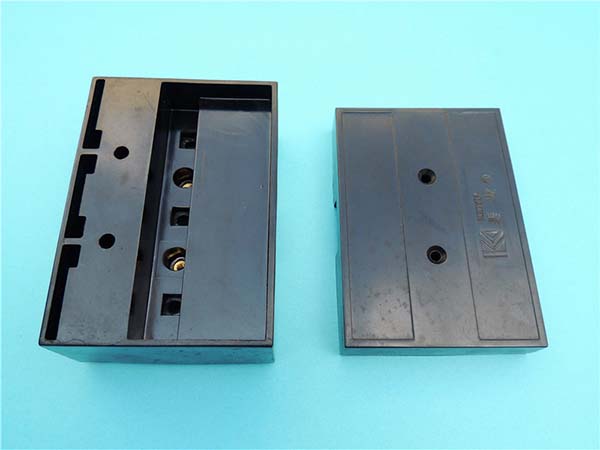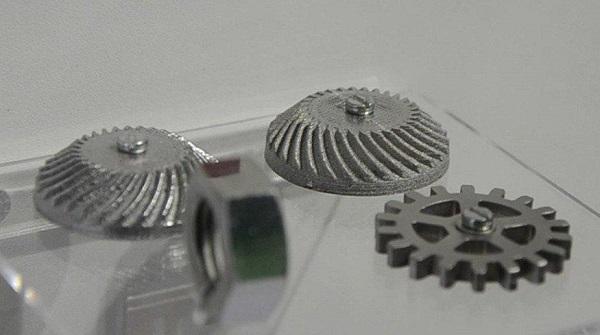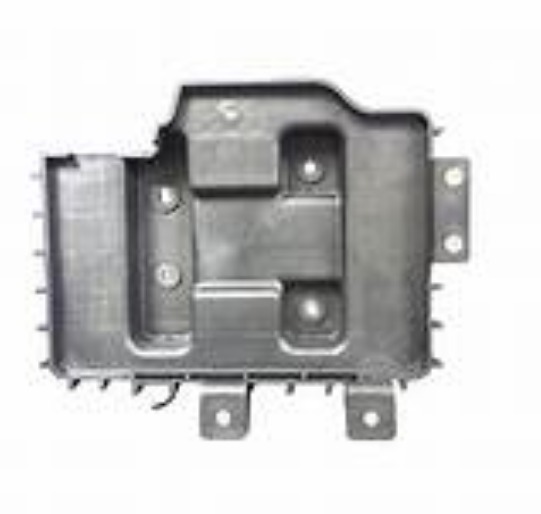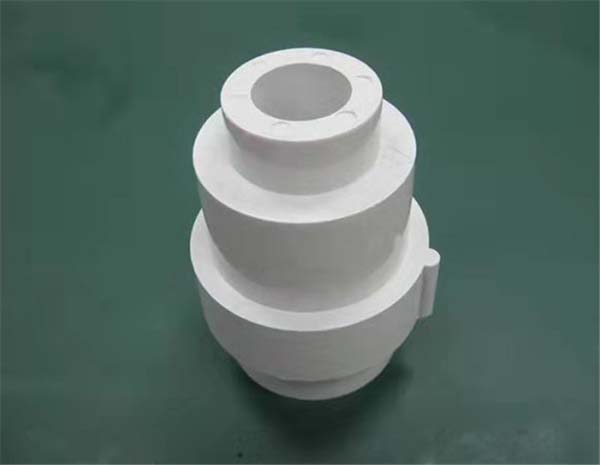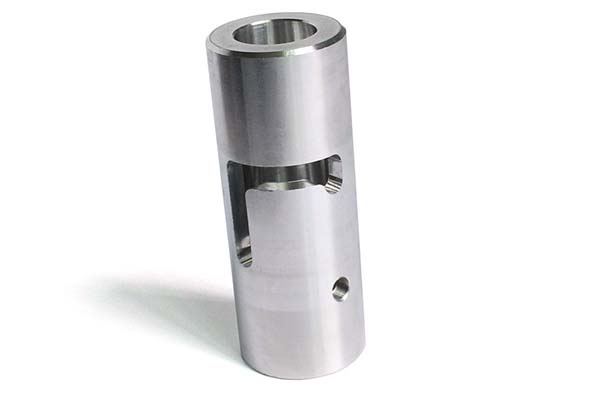1. Introduction to Brass Machining: How Do Material Properties Influence Machining Choices?
If you want to do brass processing well, the first step is to find out the "temper" of the material itself. As a copper-zinc alloy, the distinction between different brass alloy types and brass grades directly determines the processing difficulty and applicable scenarios. For example, common H62 brass contains 62% copper and 38% zinc, and has medium machinability; HPb59-1 lead brass, on the other hand, is a common choice for machining due to its lead content of about 1%, which greatly improves cutting performance. However, with the improvement of environmental protection requirements, lead-free brass (such as C28000) is more and more widely used in drinking water pipelines, medical devices and other fields, and its processing requires attention to tool wear control.
In terms of performance, brass has a core strength (tensile strength of 200-400MPa, hardness HB60-100) and machinability – its cutting resistance is only 60% of that of medium carbon steel, and its corrosion resistance is better than that of pure copper, making it less prone to oxidation in humid environments. At the same time, brass's good electrical conductivity (2/3 of pure copper) makes it indispensable in the field of electronics. We once provided technical support to an electronic component factory that initially selected the wrong material and reduced processing efficiency due to low processing efficiency, and then switched to HPb59-1 lead brass according to the material selection guidelines, increasing production efficiency by 30%. In addition, the recycling value of brass is as high as 80% of the raw material price, which is also an economic benefit point that businesses are concerned about.
2. Core advantages of brass machining: Why is it the first choice in the manufacturing industry?
Compared with other metals, the economic benefits and performance advantages of brass machining are outstanding. The first is the high-speed machining capacity – brass can reach a cutting speed of 300-600m/min, far exceeding the 100-200m/min of ordinary steel, and the production efficiency can be increased by more than 40% with the optimized process. An auto parts factory has shown that increasing the brass spool machining speed from 400m/min to 550m/min has reduced cycle time by 25% and increased daily output from 800 to 1,000 pieces.
The second is the optimization of machining costs: brass chips are prone to breakage and non-stick knives, which can significantly reduce tool wear and extend tool life by 2-3 times. We have counted a set of data: the same number of parts are machined for brass at 1/3 the tooling cost of stainless steel. At the same time, brass chip control is simple, eliminating the need for additional knife entanglement issues, further reducing labor costs. In addition, the recycling benefits of brass materials are significant, and the recycling of leftovers can cover 15%-20% of raw material costs, ultimately achieving unit cost reduction and increased return on investment.
3. Key process parameters: How to set them to balance efficiency and quality?
The process parameter setting of brass machining directly affects product quality and production efficiency, and the following is a practical guide to the core parameters:
| Processing method | Cutting speed (m/min) | Feed rate (mm/r) | Depth of Cutting (mm) | Core considerations |
| turning | 300-600 | 0.1-0.3 | 1-3 | High speed and low feed ensure smooth surfaces |
| Milling | 200-400 | 0.05-0.2 | 0.5-2 | Forward milling is used to reduce tool vibration |
| Drilling | 150-300 | 0.08-0.25 | A drilling ≤ 5mm at one time | Use cobalt-containing drill bits to avoid hole diameter shifts |
Matching the rotation speed to the feed is key: for example, when turning a brass bar of φ500mm, when the cutting speed is set to 500m/min, the rotation speed should be 500/(π×50)≈3183r/min, with a feed rate of 0.2mm/r, which can not only ensure efficiency but also control the surface roughness Ra≤1.6μm. In addition, coolant application is not to be ignored – emulsions or cutting oils can reduce cutting temperatures by 30%-40%, reducing tool wear and workpiece deformation. A sanitary hardware factory once caused scratches on the surface of the product due to the lack of coolant, and after adding special brass cutting fluid, the surface quality control pass rate increased from 85% to 98%.
4. Tool technology selection: How to extend life and reduce costs?
Tool selection is the "soul" of brass machining, and the following points need to be focused on: In terms of tool geometry, it is recommended to use a large rake angle (15°-20°) and a sharp cutting edge to reduce cutting force; The cutting edge radius has a significant impact, with tools with a radius of 0.05-0.1mm suitable for finishing and 0.1-0.2mm suitable for rough machining. Carbide tools are best used and are more than 3 times harder than HSS and can last up to 5 times longer when machining brass, making them ideal for high-volume production.
The choice of tool coating needs to be adjusted according to the processing scenario: TiN coating is suitable for ordinary processing and has good lubricity; AlTiN coatings are resistant to high temperatures and are suitable for high-speed processing. We once provided a solution for a medical device factory to replace ordinary HSS tools with TiN-coated carbide tools, and the tool wear management effect was remarkable, increasing the number of parts machined per tool from 200 to 1,200. At the same time, by optimizing the tool clamping method and machining path, the tool vibration can be effectively suppressed, the difficulty of cutting force control can be reduced, and the surface vibration of the workpiece can be avoided.
5. Brass and other metal processing: core differences and replacement considerations
When choosing a machining material, it's crucial to understand how brass differs from other metals:
| Contrast dimensions | brass | steel | aluminium | stainless steel |
| Cutting speed | 300-600m/min | 100-200m/min | 400-800m/min | 80-150m/min |
| Tool life | Length (2-3 times more than steel) | medium | Longer (but sticky) | short |
| Processing costs | low | middle | middle | high |
| Corrosion resistance | good | General (rust prevention required) | Good (oxide protection) | outstanding |
Material replacement considerations need to be combined with scenarios: if cost and efficiency are pursued, brass is an ideal subsir of steel, and an industrial parts factory replaces stainless steel gears with brass gears, increasing production efficiency by 50% and reducing costs by 30%; if lightweight is required, aluminum is more advantageous, but it needs to solve the problem of sticking knives; if extreme corrosion resistance is required, stainless steel is more suitable. Cost-benefit analysis shows that in the fields of sanitary ware, automobiles, electronics, etc., the comprehensive cost performance of brass far exceeds that of other metals.
6. Typical application areas of brass machining: These scenarios are best suited
The machining properties of brass make it indispensable in several sectors:
- Sanitary hardware manufacturing: faucet valve spool, shower joint, etc., using brass good corrosion resistance and machinability, can achieve complex thread processing, a well-known sanitary brand brass valve spool service life can reach 500,000 switches;
- Auto parts processing: fuel nozzles, gearbox gears, etc., high-speed processing can meet the needs of mass production, and the daily output of brass fuel nozzles of a car company can reach 20,000 pieces;
- Electronic connector manufacturing: using excellent conductivity, the processing accuracy can reach ±0.01mm, suitable for precision electronic equipment;
- Aerospace applications: Some structural parts and connectors need to meet the requirements of lightweight and fatigue resistance, and the high stability of brass processing can ensure product consistency;
- Medical device manufacturing: Lead-free brass is used in infusion set fittings and surgical instruments, which must meet biocompatibility requirements and control the surface roughness of Ra≤0.8μm during processing.
7. Best Practices for Brass Machining: Learn from case studies for efficiency techniques
1. Parameter optimization cases
When processing brass connectors in an electronic component factory, the initial efficiency was reduced due to low cutting speed (200m/min), which was adjusted to 450m/min, with a feed rate of 0.15mm/r and a cutting depth of 1.5mm, the production capacity increased by 80%, and the defective rate was reduced from 3% to 0.5%.
2. Tool selection guide
- Rough machining: use carbide indexable tools, with a cutting edge radius of 0.2mm, suitable for large cutting volumes;
- Finishing: Use diamond-coated tools to ensure surface accuracy;
- Deep hole machining: Use an internally cooled drill bit with high-pressure coolant to avoid edge accumulation.
3. Troubleshooting methods
- Rough surface: increase the cutting speed, reduce the feed rate, check whether the cutting edge of the tool is worn;
- Tool wear too fast: replace the coating tool to increase the coolant flow rate and reduce the depth of cut;
- Workpiece deformation: use fixture positioning to reduce clamping force and process it in multiple times.
4. Cost control strategy
- Recycling scraps: Centralized collection of chips, brass chips with a purity ≥ 99% can be recycled up to 70% of raw materials;
- Tool reuse: Regrinding the worn tool can be reused 2-3 times;
- Batch processing: Reasonable arrangement of production schedules to reduce tool change and adjustment time.
8. Yigu Technology's view
The core competitiveness of brass processing lies in the balance of "high efficiency, low cost, and high adaptability", which is also the key to its long-term success in the manufacturing industry. With the increase in the demand for lead-free and precision, enterprises need to start from three aspects: material selection, process optimization, and tool upgrades, in order to give full play to the processing advantages of brass. Yigu Technology suggests that small and medium-sized enterprises can prioritize parameter optimization and tool selection to achieve efficiency improvement without large equipment investment; Large enterprises can explore automated processing and digital management to further reduce labor costs. In the future, brass processing will develop in the direction of "green (lead-free, energy-saving), precision (micron-level accuracy), and intelligence (automated production line)", and enterprises that lay out in advance will gain greater competitive advantages.
9. FAQ
- What should I do if the knife is easy to stick when brass is machining?
Answer: Increasing the cutting speed (≥350m/min), using TiN or diamond-coated tools, adding special cutting fluid, and using the forward milling method can effectively solve the problem of sticking tools.
- What is the difference between lead-free brass and lead-brass machining?
Answer: lead-free brass has slightly greater cutting resistance, faster tool wear, need to reduce the cutting depth (≤1mm), and choose a sharper tool; Lead brass has better cutting performance and can be used at higher speeds and feed rates.
- How to Control Dimensional Accuracy in Brass Machining?
Answer: Choose a machine tool with good stability, use a constant temperature processing environment (temperature fluctuation ≤± 2°C), roughing and finishing, control the finishing allowance at 0.2-0.5mm, and calibrate tools and measuring tools regularly.
- How to choose coolant for brass machining?
Answer: Emulsion (concentration 5%-10%) can be selected for general processing, extreme pressure cutting oil is recommended for finishing, high-pressure coolant (pressure ≥ 10MPa) is used for deep hole machining, and environmentally friendly coolant is required for lead-free brass processing.

